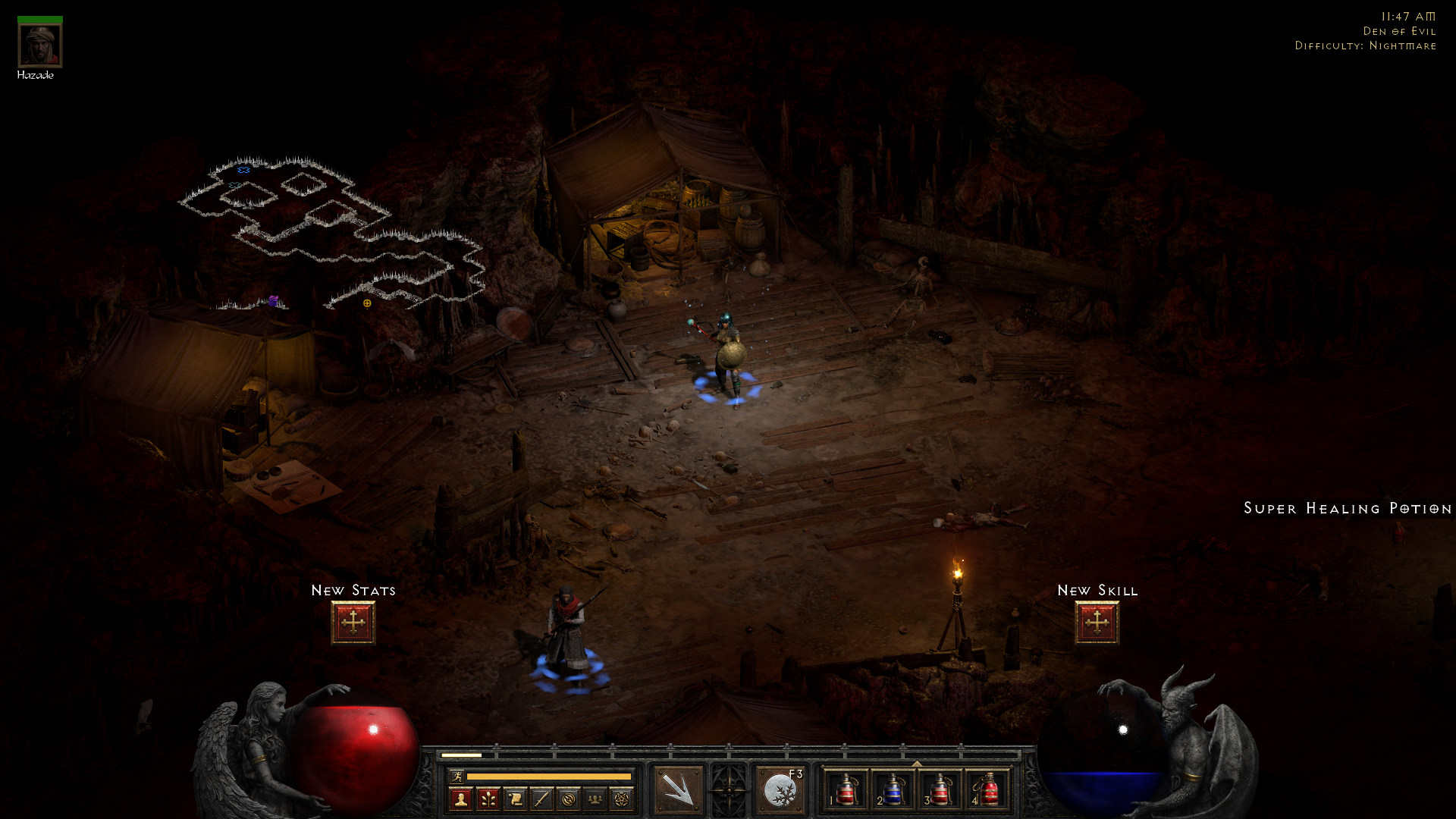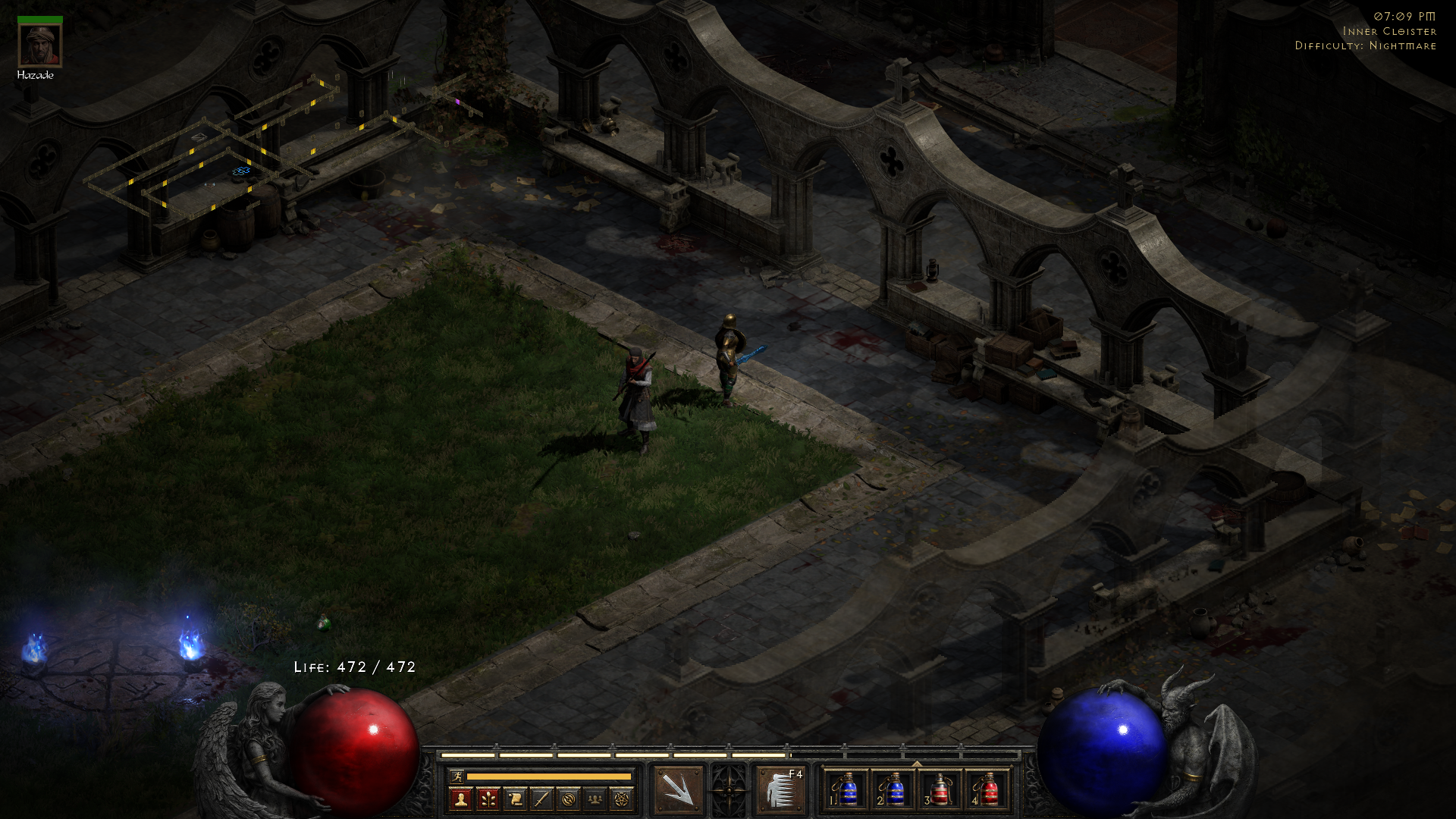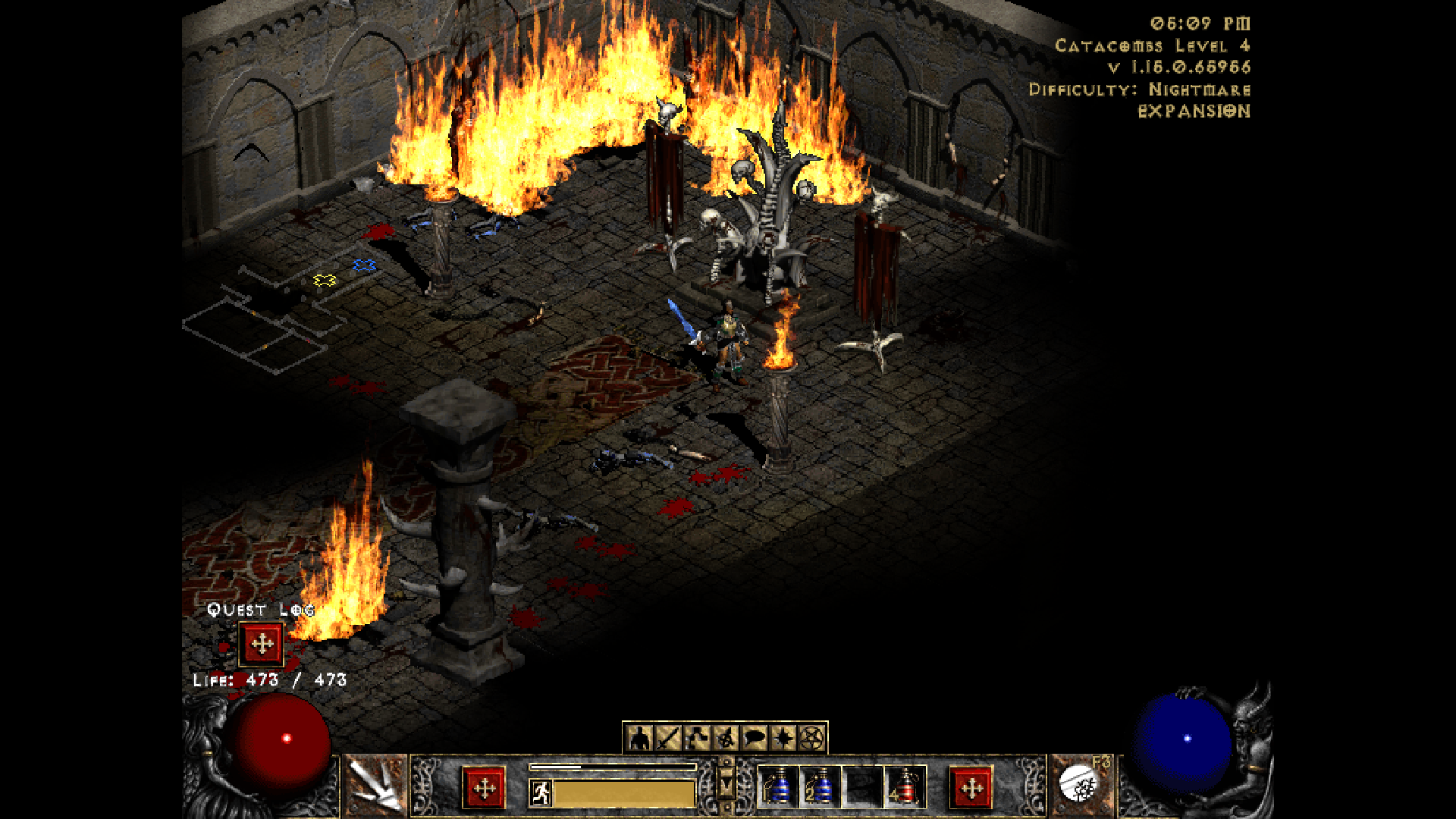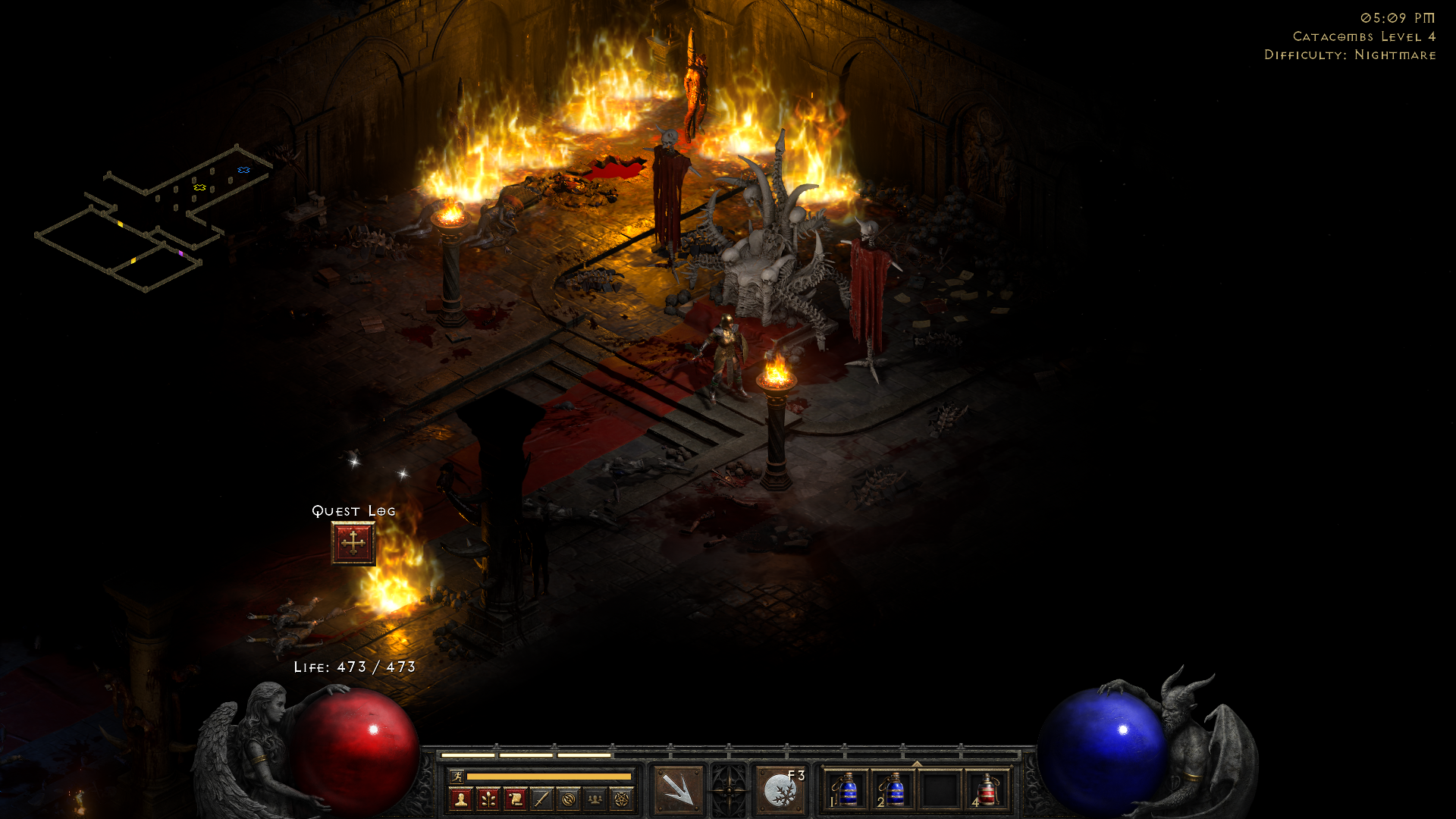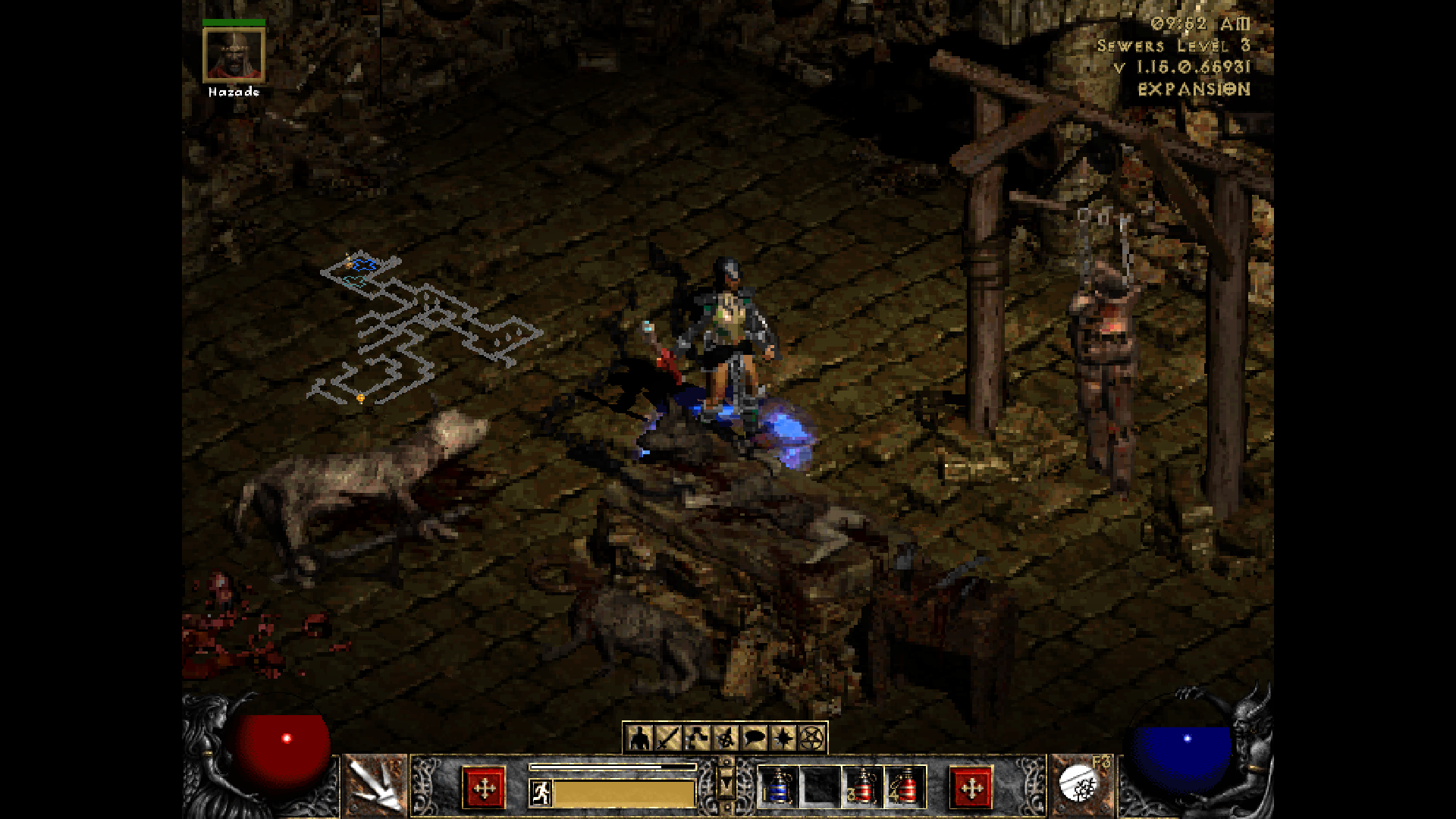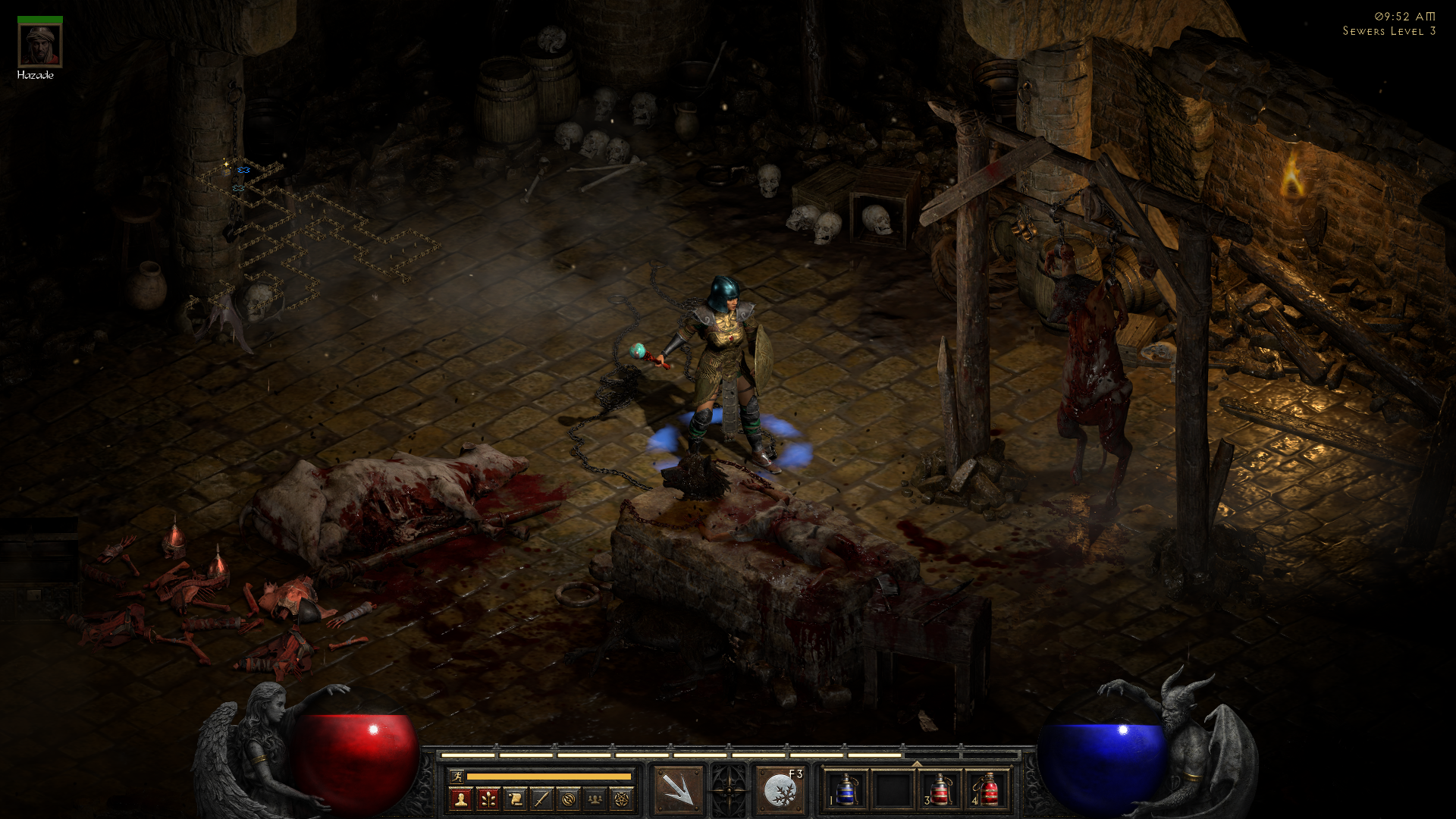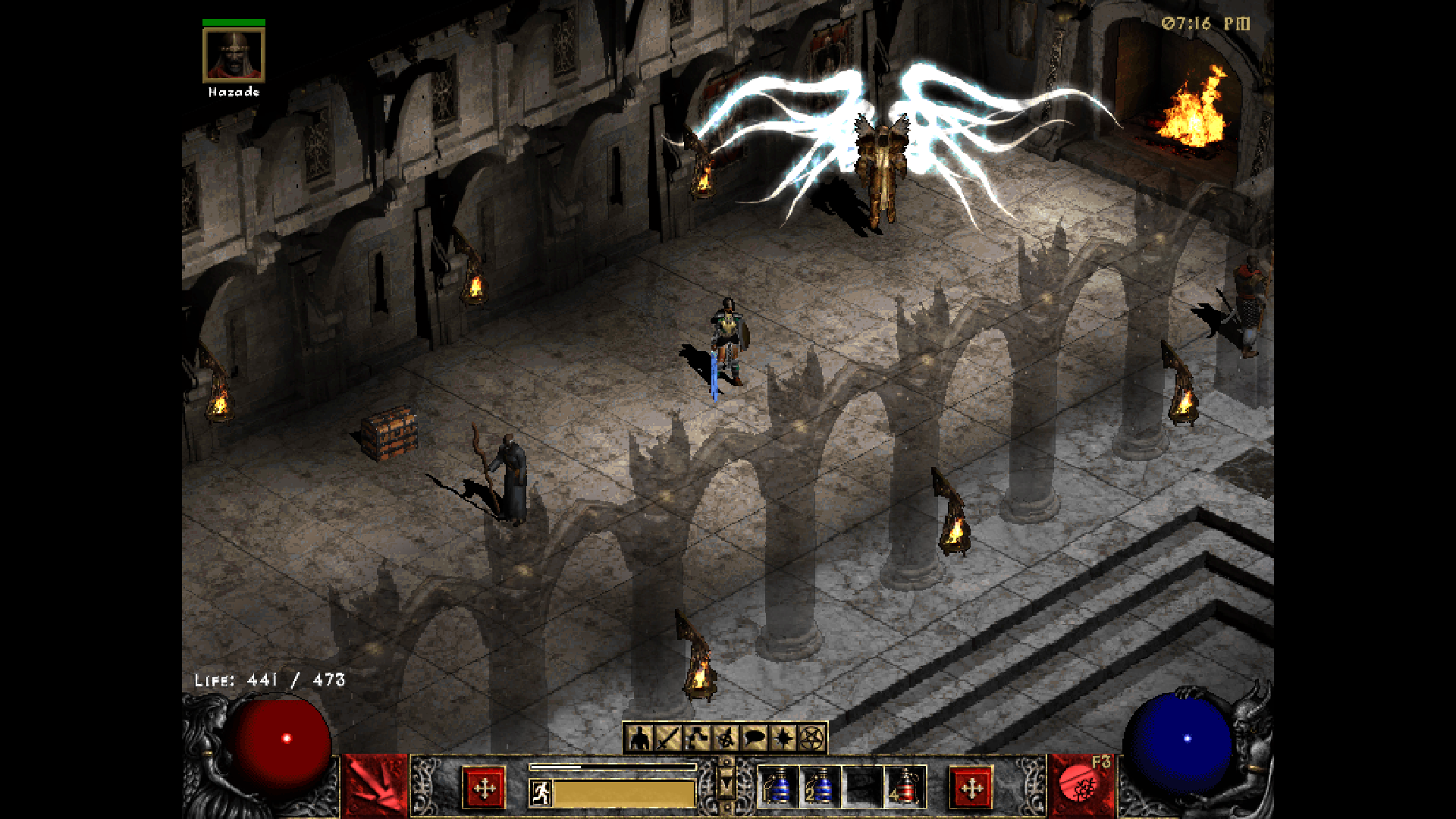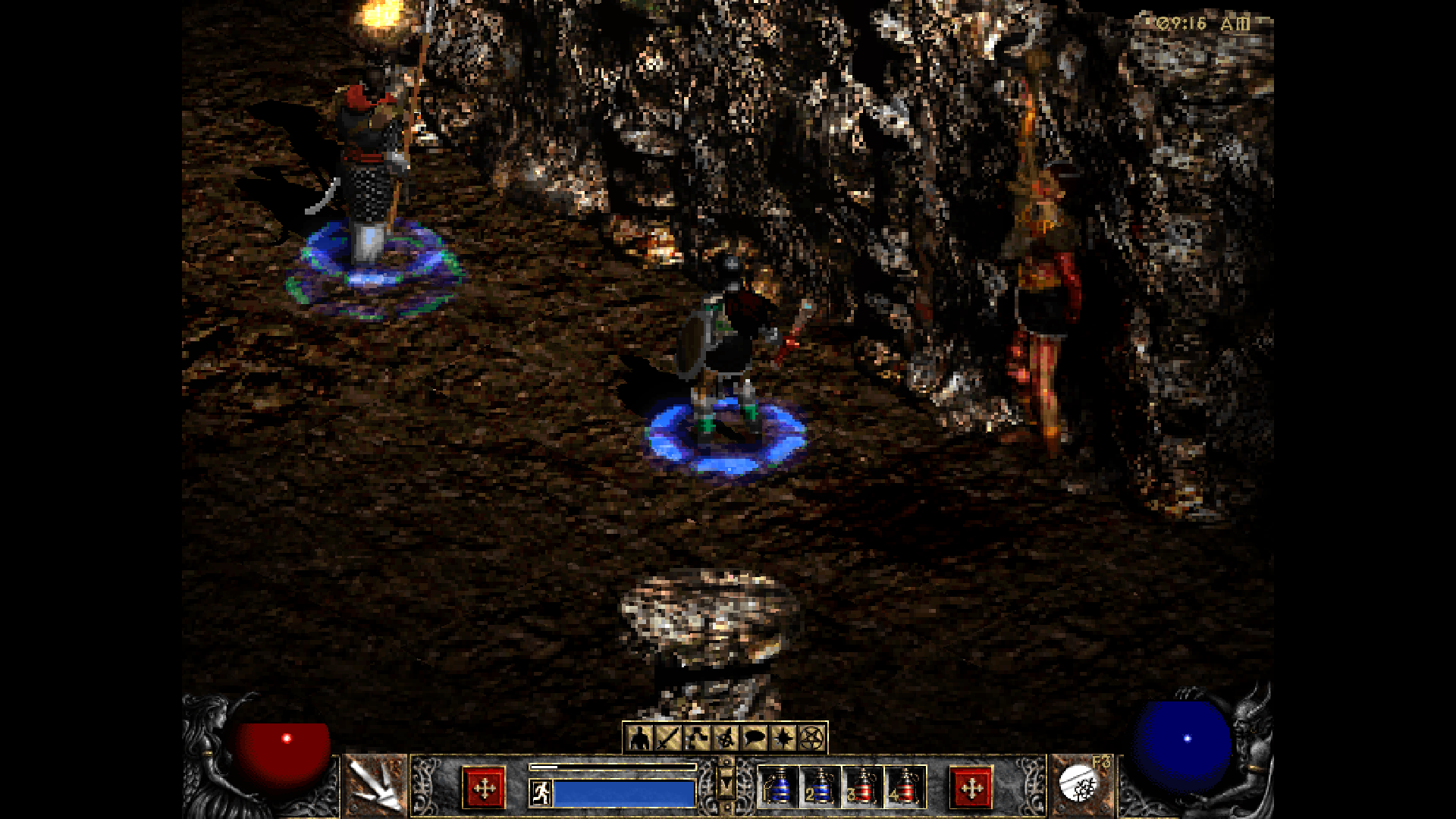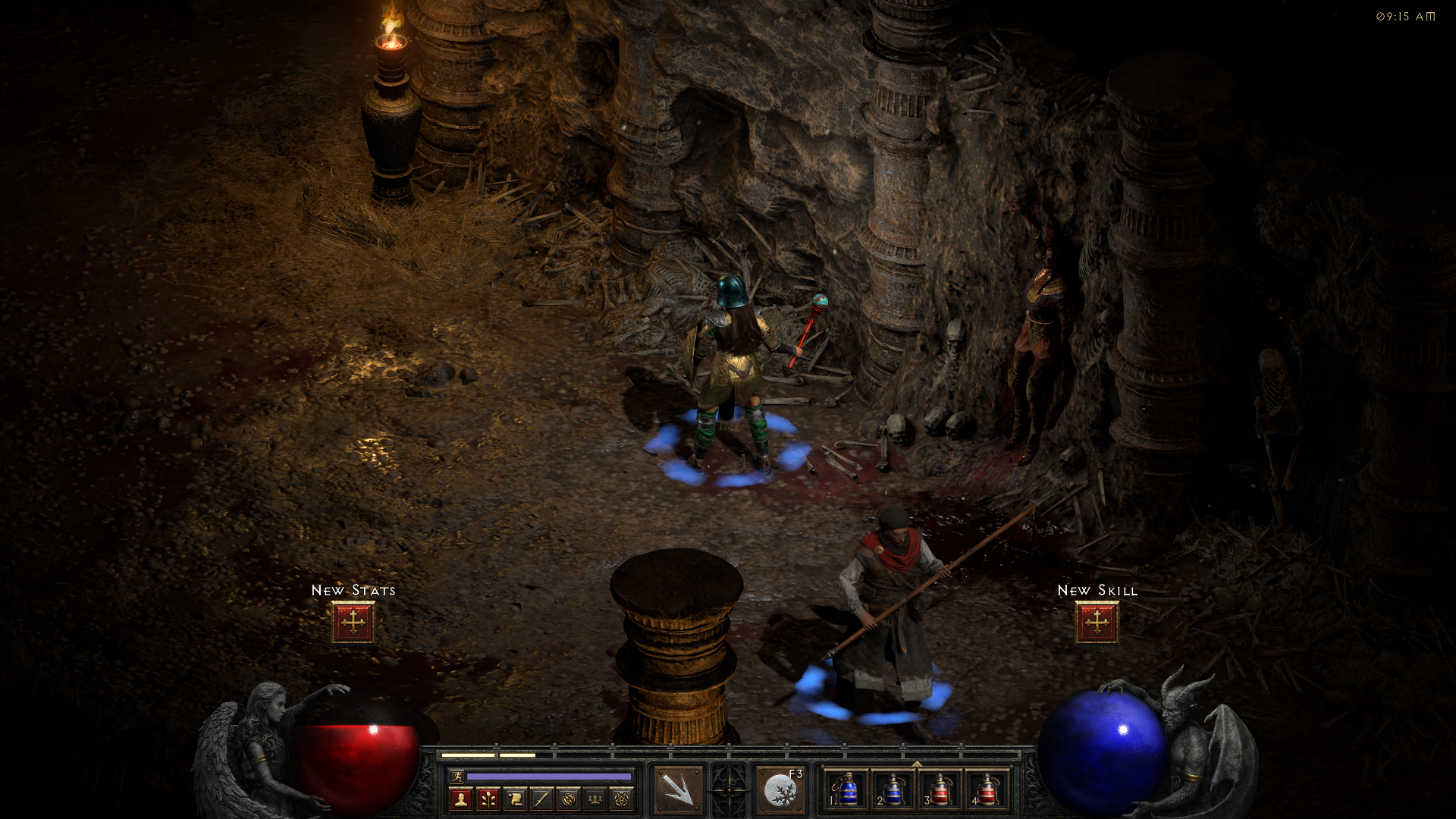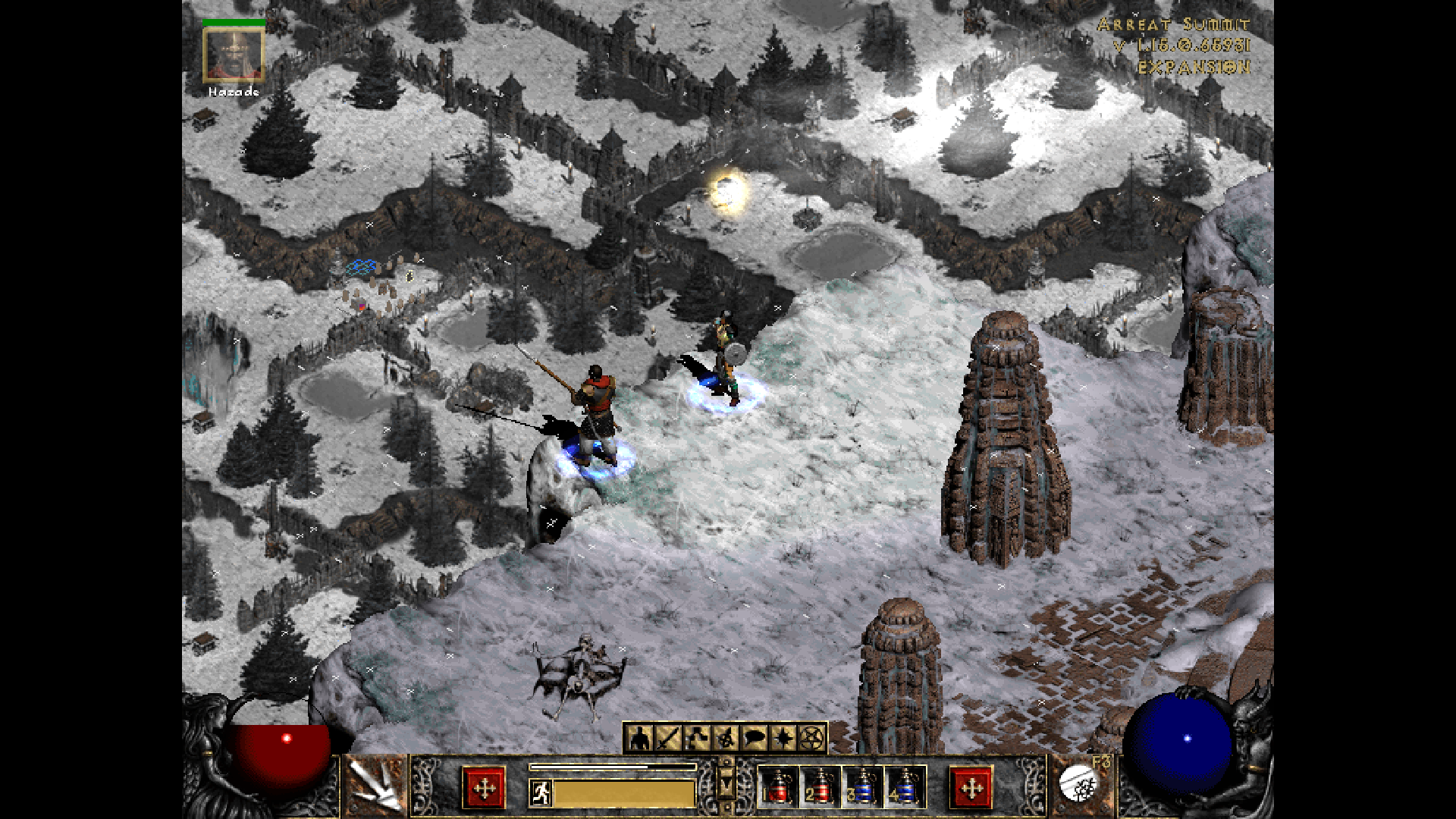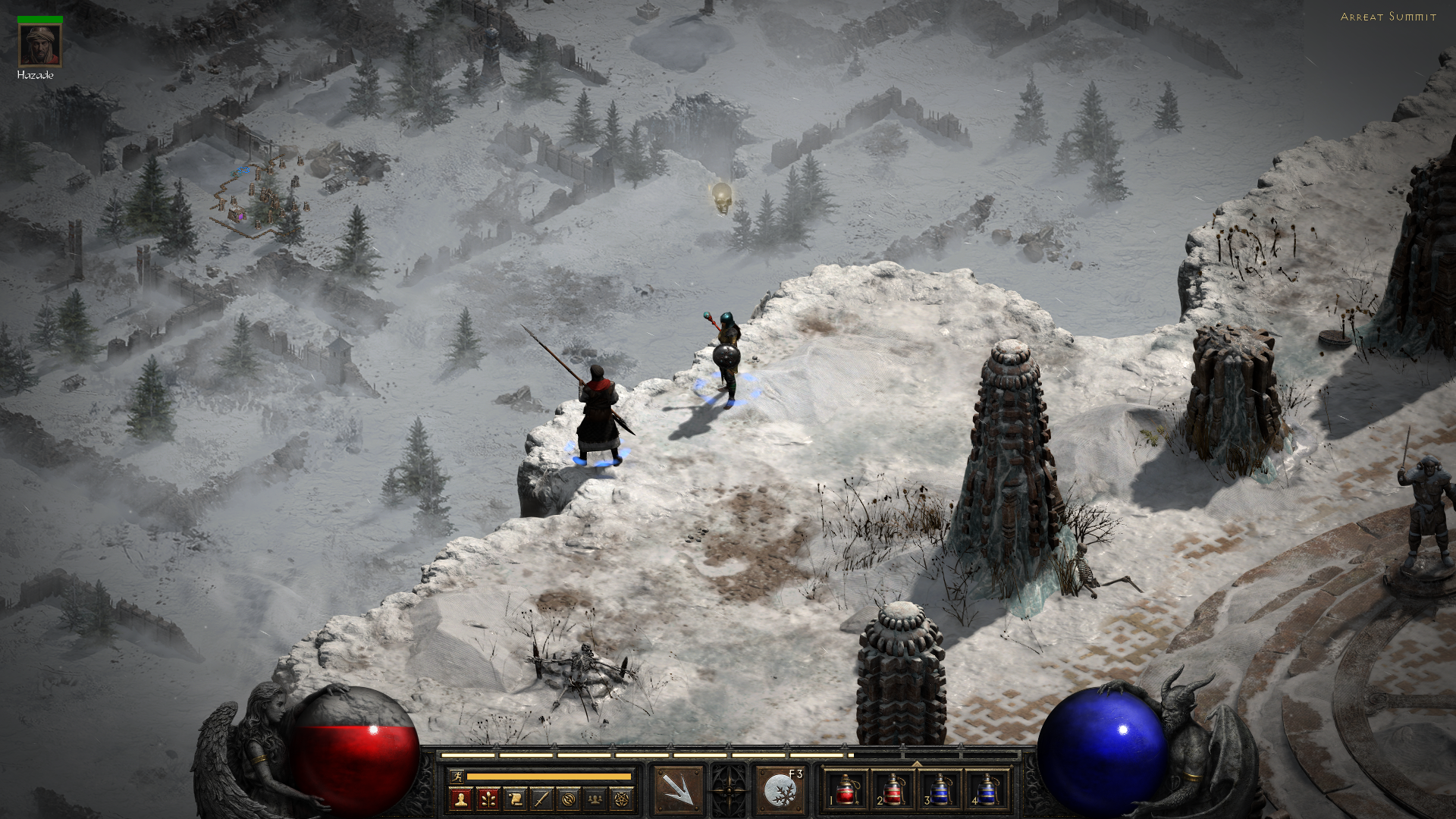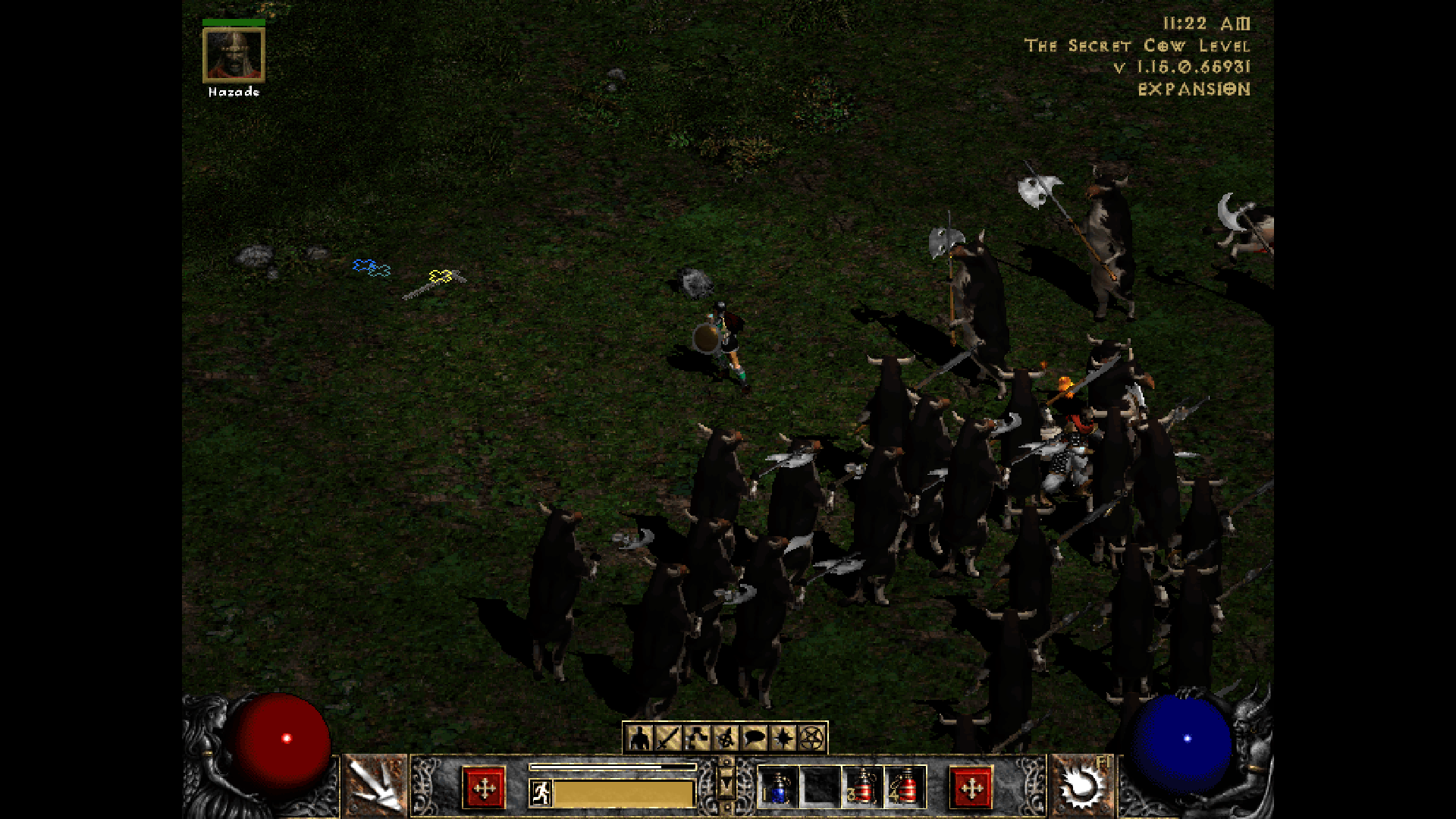
What a time to be alive. I can’t believe I’m playing a remastered version of one of my all time favorite PC games. And what’s doubly surprising is that I’m playing it with the same level of enthusiasm a 13-year-old me had all those years ago. I bought the original game from a Funcoland the day it came out in 2000 at my local mall, and while both locations are nothing but memories now, Diablo II is still alive and kicking with an active modding community and passionate theorycrafters and streamers. Getting a remaster all these years later feels surreal.
Diablo II represented a much simpler time in my life, so I’m pleased to see how faithfully the game’s aesthetic was reimagined with today’s technology. It’s easy to forget that even when it released back in 2000, it wasn’t considered a super pretty game. And despite its timeless gameplay, when the game is hardcoded to run at 25 frames per second with the max resolution of 800×600 out of the box, it’s not exactly a selling point for today’s gamers.
But today, I feel the game has finally addressed that, and brings the legacy of the game’s aesthetic the way it was always intended. And when I finally got my hands on the full version, courtesy of Blizzard, the very first thing I did was to revisit many of the locations the game and take screenshots of everything as it looked in the original game, but with today’s engine. So join me a trip down memory lane to this this game that made the summer of 2000 the best summer of my life.
Throughout the galleries, we’ll be putting the original game on the left and the remastered version on the right.
Revisiting the Den of Evil
It wouldn’t be a trip back to Sanctuary without a stop at the Den of Evil to give good ol’ corpsefire a piece of my mind. While I knew exactly how to deal with him, I was pleasantly surprised to see his spawnpoint included this camp, filled with supplies. This might seem like such a small extra detail to add in the remaster, but the backdrop adds so much lore behind the creature itself. I never really wondered what he was doing there, but the camp adds that visual storytelling that we love so much. What was corpsefire in life? Was he part of a larger caravan that decided to take refuge at a cave, only for it to become a den of evil when the wanderer walked by? I don’t know, but this was just one of the many small additions to the world that added to the suffering the people of sanctuary had to endure when the prime evils started walking the earth again.
The rogue monastery’s inner cloister looked terrible… in a good way
I didn’t initially give the inner cloister much thought as I fought my way through it. Even back then, it was just a convenient waypoint location before the battle with Andariel. But as I emerged from the prison and found myself in the blood-stained and demon-ravaged locale, I finally realized just how dire things got for the rogues.
The original artwork made the place a lot cleaner-looking. The grass looked well-kept, and even with the blood on the ground, it didn’t seem that bad. But the remaster really showed it to be a site of a terrible battle. The darkness and destruction made it painfully clear that we are getting closer and closer to the corruption Andariel has wrought.
Witnessing the true horror of Andariel’s lair
As I got to the lowest point of the catacombs, I did battle with Andariel. And after tossing a few frozen orbs her way, I had a chance to take a look-see at what she’s done with the place. The red carpet was a nice extra touch, but the real star of the show was the lighting. The glow of the flames as the only source of light in these deep, dark, ancient catacombs gave me the sense of actually really being far below the ground.
Diablo and Diablo II have always been pretty creepy games. I never quite put my finger on what made Diablo III so much more different and it was the absence of true darkness. The darkest color Diablo III had was a bluish grey. The remastered made excellent use of the color black. And coupling that with the lighting technology in this new engine is what brought back that distinctive Blizzard North aesthetic.
Radament’s project in Lut Gholein’s sewers
Even though players can entirely skip Lut Gholein’s sewers in Diablo II, the free skill point Radament dropped made trudging through the poison damage and ranged skeletons a worthwhile endeavor. But I’ve always wondered what the heck he was working on in his lair. From the looks of it in the original, it looked like he was making a skin suit so that he could pass off as a human in the surface. I always figured that’d be a bad idea considering how… well, bad it looks.
But it turns out he was actually working on a new type of beast with the legs of a cow, the arms of a human, and the head of a wolf. Considering how he has the power to bring creatures back to life, this makes way more sense now. Good thing adventurers had a reason to go down there and kill this guy, otherwise we’d have these amalgamations running around causing all sorts of trouble for the citizens of the city above.
Visiting Heaven’s final bastion, the Pandemonium Fortress
Fun fact, I learned the word “pandemonium” from this game. And back then, teaching the word was part of the eighth grade curriculum, so I totally nailed that word when it came up as one of my vocabulary words. School days aside, this fortress was one of my favorite areas in the game, and Blizzard and Vicarious Visions absolutely nailed the aesthetic for this location.
The original Aesthetic was perfectly fine for what it was in the era. The pristine marble, clean architecture, and comforting fire pit were juxtaposed with the chaotic, sad, and dangerous battlefield outside the walls. But the lighting and the effective use of orange and black made it a much more realistic for a fortress at the edge of hell: a final bastion before the immense powers of hell. Instead of a juxtaposition, it became more of a sign of defiance against the legions, that the powers of heaven are willing to fight in the demons’ home turf and also hold off the endless waves of demons.
Freaking out at the Halls of Pain
Nilathak’s temple in act 5 is often visited by many players. Home of the famous Pindleskin, this boss is known to drop many unique items and is a popular enemy for players to endlessly kill. But aside from a sweet boss spawn, the location has to be one of the freakiest places in the entire game. The Halls of Pain particularly stick out to me because it features a slain sorceress pinned to a wall.
It was my own morbid curiosity that led me down here. The team really pushed the M rating with this place. Some folks were worried about the level of censorship this title was going to have, but this area alone shows the level of dedication the team had to keeping the experience as authentic as possible. The devs really wanted to remind us that we were playing Diablo II. There will be absolutely no rainbows here!
Taking in the sights atop Mount Arreat
This was the very first place I visited as soon as the game dropped. I just had to see what the devs did here. Despite the game being an isometric RPG, this was always an impressive sight when Diablo II: Lord of Destruction first dropped. And seeing it completely redone with some extra effects was a feast for the eyes.
The summit was, from what I recall, the first time Nephilim were mentioned in the game. And while that just seemed like some extra dialogue to skip over back in the day, the ancients were a foreshadowing of humanity’s true potential and of the power of the future characters in Diablo III.
Admiring the (corrupted) worldstone
The repercussions of the Worldstone’s destruction were left unanswered until Diablo III released in 2012. Today, we know that the Worldstone had two main functions: to hide the world of Sanctuary from both Heaven and Hell and to suppress the power of the Nephilim, who held the power of both angels and demons. Without its destruction, the power levels of the future character classes would’ve never been realized.
Its recreation here was a fun sight to behold. Removing the empty space and adding a wall in the back helped give the worldstone itself the feeling that it was just the tip of a much larger stone. And with the weight it carried in the story, a mix of the intimate with its sheer size has a level of symbolism behind it.
Visiting the secret cow level
Just kidding. There is no cow level.
There were so many other places I want to show, but this just seems to be the gift that just keeps on giving. Before I end this article, I’d also like to share the character I used in this game. Something I enjoyed doing back in the day was making single-player characters, saving them on a floppy disk, and sharing it with my friends at school. She’s an ice orb sorceress with a few points into fireball to deal with cold immune monsters, and she’s got a decent set of gear to get through Nightmare mode. I haven’t used any of the respecs, so she can be made to fit with your playstyle.


